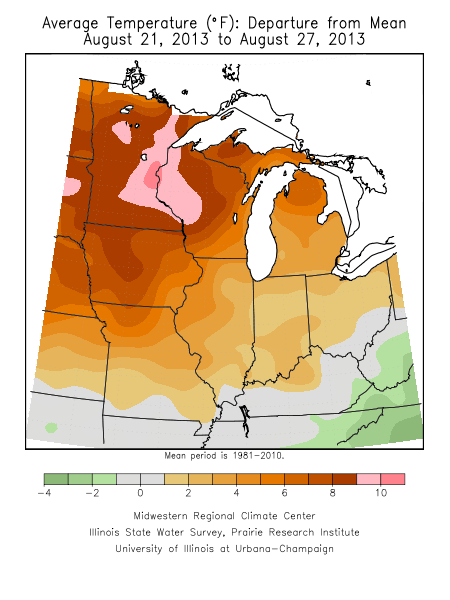Yesterday, the US Drought Monitor has introduced “moderate drought” into far western Illinois. Most droughts move slow and take 3-6 months to develop. However, sometimes they can move very fast if conditions are right, leading to the term “flash drought”. This situation appears to be developing in parts of western Illinois now.
We have the two necessary ingredients in place for a flash drought. One was the exceptionally dry weather over the last 60 days. The other was the warmer than average temperatures over the last two weeks, which drove up the water use by crops. See the previous post on this.
The timing was bad for both corn and soybeans. Earlier this week, the USDA NASS report for Illinois indicated that 13% of the corn was rated poor to very poor, and that 12% of the soybeans were rated poor to very poor. In a trip to Springfield yesterday, I would say that the quality of the corn ranged widely within the same fields. Corn planted in the low spots was in bad shape due to poor root development, but looked better in the well-drained areas.
Flash droughts are harder to identify and monitor because our usual drought-monitoring tools move too slowly to pick the rapidly-changing conditions. The impacts are usually confined to agriculture in flash drought. Most stream flows, lake levels, and ground water levels have not been impacted by these conditions so far.





